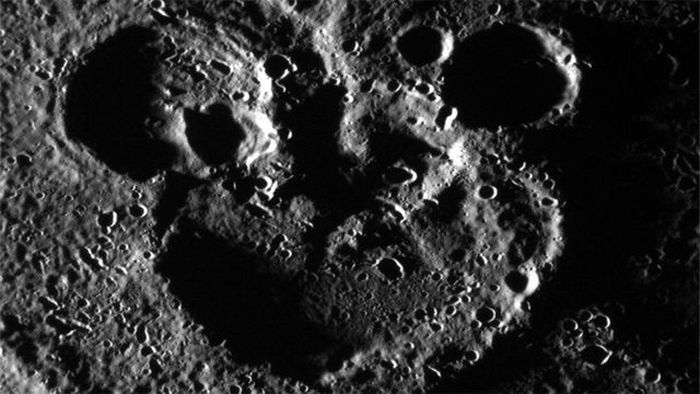|
|
Exploring Astronomy Photography Of Outer Space Universe
|
The present overall density of the universe is very low, roughly 9.9 × 10−30 grams per cubic centimetre. This mass-energy appears to consist of 73% dark energy, 23% cold dark matter and 4% ordinary matter. Thus the density of atoms is on the order of a single hydrogen atom for every four cubic meters of volume. The properties of dark energy and dark matter are largely unknown. Dark matter gravitates as ordinary matter, and thus works to slow the expansion of the universe; by contrast, dark energy accelerates its expansion.
The most precise estimate of the universe's age is 13.72±0.12 billion years old, based on observations of the cosmic microwave background radiation. Independent estimates (based on measurements such as radioactive dating) agree at 13–15 billion years. The universe has not been the same at all times in its history; for example, the relative populations of quasars and galaxies have changed and space itself appears to have expanded. This expansion accounts for how Earth-bound scientists can observe the light from a galaxy 30 billion light years away, even if that light has traveled for only 13 billion years; the very space between them has expanded. This expansion is consistent with the observation that the light from distant galaxies has been redshifted; the photons emitted have been stretched to longer wavelengths and lower frequency during their journey. The rate of this spatial expansion is accelerating, based on studies of Type Ia supernovae and corroborated by other data.
The relative fractions of different chemical elements — particularly the lightest atoms such as hydrogen, deuterium and helium — seem to be identical throughout the universe and throughout its observable history. The universe seems to have much more matter than antimatter, an asymmetry possibly related to the observations of CP violation. The universe appears to have no net electric charge, and therefore gravity appears to be the dominant interaction on cosmological length scales. The universe also appears to have neither net momentum nor angular momentum. The absence of net charge and momentum would follow from accepted physical laws (Gauss's law and the non-divergence of the stress-energy-momentum pseudotensor, respectively), if the universe were finite.
The universe appears to have a smooth space-time continuum consisting of three spatial dimensions and one temporal (time) dimension. On the average, space is observed to be very nearly flat (close to zero curvature), meaning that Euclidean geometry is experimentally true with high accuracy throughout most of the Universe. Spacetime also appears to have a simply connected topology, at least on the length-scale of the observable universe. However, present observations cannot exclude the possibilities that the universe has more dimensions and that its spacetime may have a multiply connected global topology, in analogy with the cylindrical or toroidal topologies of two-dimensional spaces.
|
|









